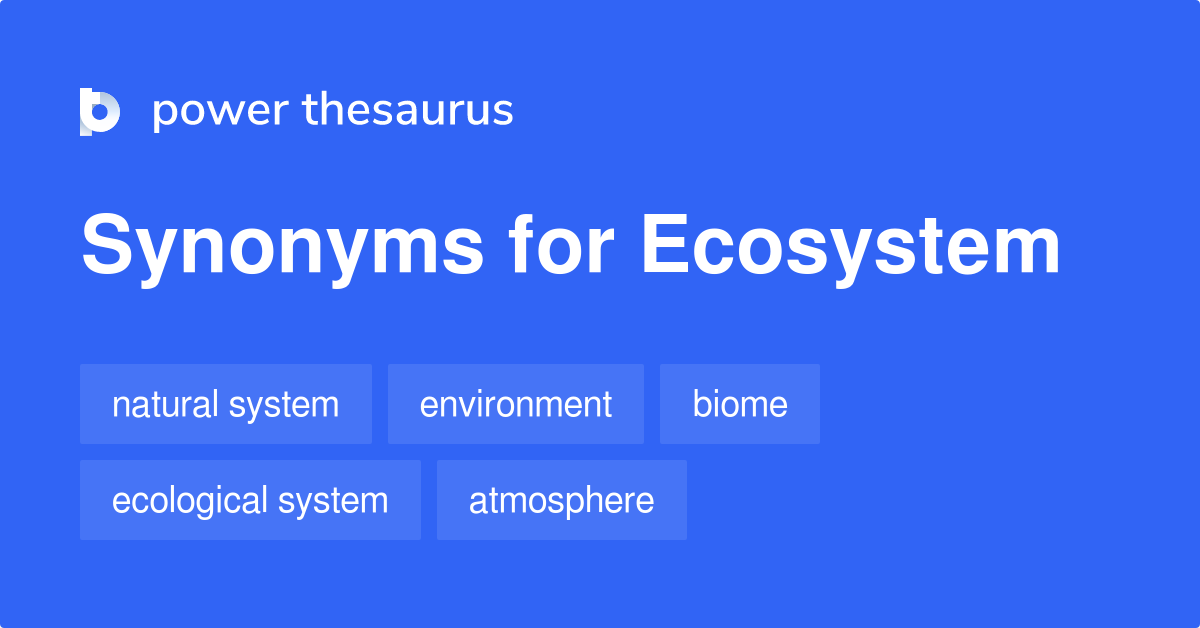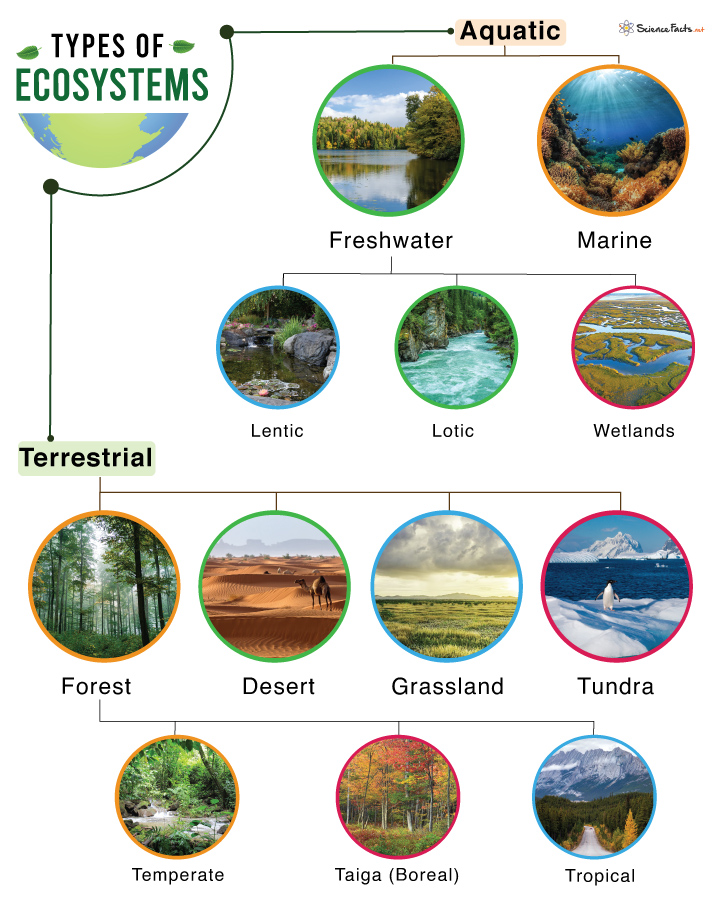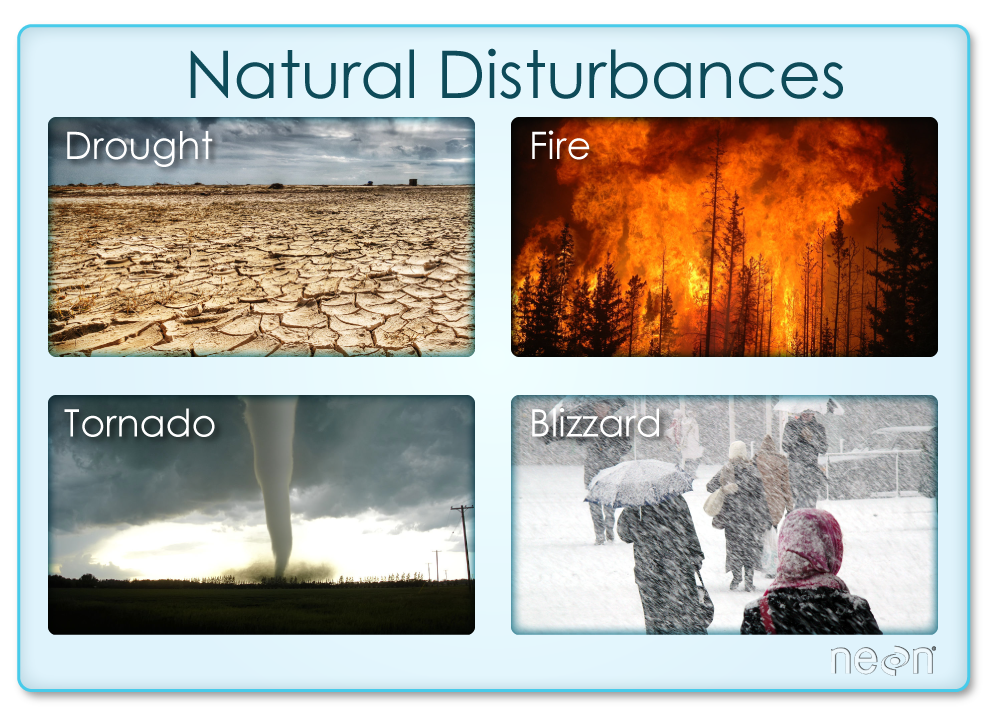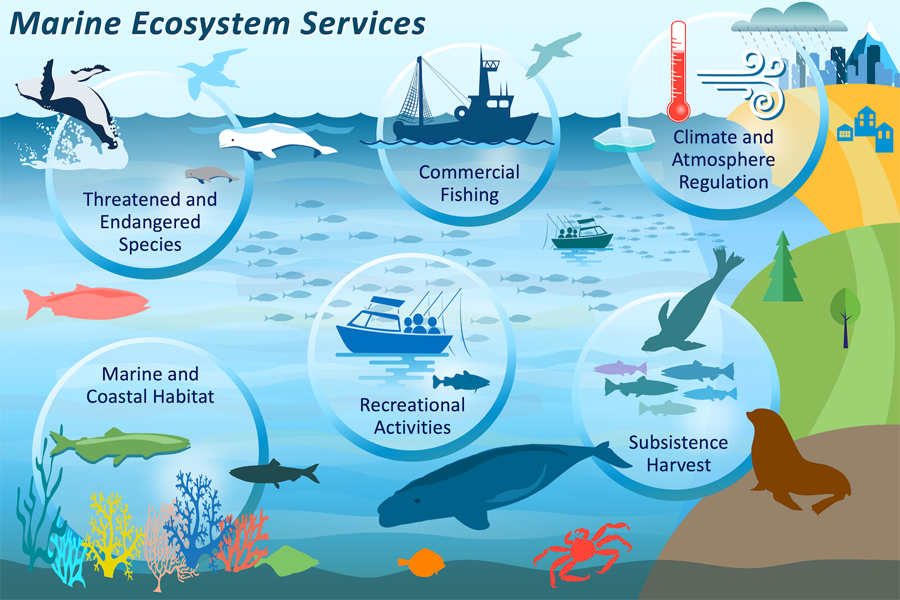Topic biology ecosystem definition: Explore the fascinating world of biology ecosystems, where life interconnects in complex, dynamic networks, defining the essence of our planet"s biodiversity.
Table of Content
- What is the definition of an ecosystem in biology?
- Understanding Ecosystems: Definitions and Key Concepts
- Types of Ecosystems: Terrestrial, Aquatic, and Marine
- Components of an Ecosystem: Biotic and Abiotic Factors
- Energy Flow and Nutrient Cycles in Ecosystems
- The Importance of Ecosystems: Biodiversity and Ecosystem Services
- Human Impact on Ecosystems: Challenges and Conservation Efforts
- YOUTUBE: What Is an Ecosystem?
- Ecosystem Dynamics: Succession, Resilience, and Stability
- Case Studies: Examples of Ecosystem Management and Restoration
- Emerging Research: Technological Advances in Ecosystem Science
What is the definition of an ecosystem in biology?
An ecosystem in biology is a geographic area where plants, animals, and other organisms, as well as weather and landscapes, work together to form a bubble of life. It is a complex and interconnected system that includes both living organisms (biotic factors) and their physical environment (abiotic factors). Ecosystems can be found in various habitats such as terrestrial (land), marine (oceans and seas), and aquatic (freshwater bodies).
Ecosystems can vary greatly in size, from small-scale ecosystems such as a pond or a forest to large-scale ecosystems such as a coral reef or a desert. Within an ecosystem, organisms interact with each other and with their environment in different ways. These interactions can include the transfer of energy and nutrients, the maintenance of ecological balance, and the adaptation to environmental changes.
Some key components of an ecosystem include:
- Producers: Plants and other photosynthetic organisms that convert sunlight into energy through photosynthesis.
- Consumers: Animals and other organisms that obtain energy by consuming other organisms.
- Decomposers: Organisms such as bacteria and fungi that break down dead organic matter and recycle nutrients back into the ecosystem.
- Abiotic factors: Non-living components of the ecosystem, including temperature, water availability, soil composition, and sunlight.
Ecosystems are dynamic and constantly changing. They can be affected by natural processes, such as climate change and natural disasters, as well as human activities like deforestation and pollution. Understanding ecosystems and their functioning is crucial for studying biodiversity, conservation, and the overall health of the planet.
READ MORE:
Understanding Ecosystems: Definitions and Key Concepts
An ecosystem is a complex network of living organisms (biotic factors) and the non-living (abiotic factors) elements with which they interact within a specific area. This fundamental concept in biology highlights the intricate relationships that sustain life on Earth. Ecosystems can vary in size from a small puddle to a vast ocean, but each plays a crucial role in the planet"s biodiversity.
- Biotic Factors: These include all living components of an ecosystem, such as plants, animals, fungi, and microorganisms.
- Abiotic Factors: These are the non-living components that influence an ecosystem, including sunlight, water, air, soil, and temperature.
- Energy Flow: Ecosystems are characterized by the flow of energy through food chains and webs, beginning with producers and moving through consumers and decomposers.
- Nutrient Cycling: The recycling of nutrients from the environment through various organisms and back into the environment is essential for sustaining life.
- Ecological Balance: The stability of an ecosystem depends on its ability to maintain equilibrium despite environmental changes.
Understanding ecosystems and their functions is crucial for appreciating the delicate balance that sustains life and for addressing environmental challenges facing our planet.

Types of Ecosystems: Terrestrial, Aquatic, and Marine
Ecosystems are broadly categorized into terrestrial, aquatic, and marine, each with unique characteristics and life forms. Understanding these types helps in the conservation and study of biodiversity.
- Terrestrial Ecosystems: These are found on land and include forests, grasslands, deserts, and tundra. They are characterized by the type of vegetation and climate in the area, significantly influencing the biodiversity found within them.
- Aquatic Ecosystems: Aquatic ecosystems are water-based and are divided into freshwater (lakes, rivers, ponds, and wetlands) and brackish environments. Life in these ecosystems is adapted to the water"s salt content, depth, and movement.
- Marine Ecosystems: Marine ecosystems cover the oceans and seas, representing the largest ecosystem on Earth. They are distinguished by their saltwater environment and include coral reefs, deep sea, and open ocean habitats. The marine ecosystem supports a diverse range of life forms, from microscopic plankton to the largest mammals.
Each ecosystem type plays a vital role in the global ecology, supporting unique forms of life and contributing to the Earth"s overall biodiversity and ecological balance.
Components of an Ecosystem: Biotic and Abiotic Factors
An ecosystem is a dynamic complex of plant, animal, and microorganism communities and the nonliving environment, interacting as a functional unit. The components of an ecosystem can be divided into biotic and abiotic factors, each playing a pivotal role in ecosystem function.
- Biotic Factors: These are the living components of an ecosystem, including all organisms such as plants, animals, fungi, and bacteria. Biotic factors relate to how these organisms interact with each other within their environment.
- Abiotic Factors: These consist of the non-living, physical and chemical elements in the ecosystem. Abiotic factors include sunlight, temperature, water, atmospheric gases, and soil. They determine the conditions and habitats in which the biotic elements can live.
Together, biotic and abiotic factors form a complex network of interactions that sustain the ecosystem. Understanding these components and their interactions is essential for the study of ecology and the conservation of biodiversity.

Energy Flow and Nutrient Cycles in Ecosystems
The functioning of ecosystems relies on the continuous flow of energy and cycling of nutrients. These processes are fundamental to understanding how ecosystems operate, supporting all life forms within them.
- Energy Flow: Energy in an ecosystem flows in a linear pathway from the sun to producers (autotrophs) and then to consumers (heterotrophs) and finally to decomposers. This flow of energy is crucial for the survival of living organisms, as it drives the food chains and food webs that connect all species within an ecosystem.
- Nutrient Cycles: Nutrients like carbon, nitrogen, and phosphorus cycle through both the biotic and abiotic components of ecosystems. These cycles involve the transfer of nutrients from the environment to organisms and back to the environment, crucial for maintaining ecosystem health and productivity. Key cycles include the carbon cycle, nitrogen cycle, and water cycle.
Understanding the energy flow and nutrient cycles helps in grasping how ecosystems function, the interdependence of living organisms, and the importance of conserving these natural processes for ecosystem sustainability.
The Importance of Ecosystems: Biodiversity and Ecosystem Services
Ecosystems are vital for the health of our planet and the well-being of all its inhabitants. They offer a wide range of benefits, known as ecosystem services, and are key to preserving biodiversity.
- Biodiversity: Ecosystems are home to a rich variety of life, with biodiversity referring to the variety and variability of living organisms in a given area. High biodiversity increases ecosystem resilience, enabling it to better withstand environmental stress and changes.
- Ecosystem Services: These are the benefits that humans freely gain from the natural environment and properly functioning ecosystems. They include provisioning services like food and water; regulating services such as climate regulation and disease control; supporting services like nutrient cycling and crop pollination; and cultural services, which provide recreational, spiritual, and educational benefits.
The conservation of ecosystems and their biodiversity is not just about protecting nature; it"s about safeguarding the future of humanity. These natural systems play a critical role in sustaining life on Earth, providing essential services that underpin our economy and well-being.
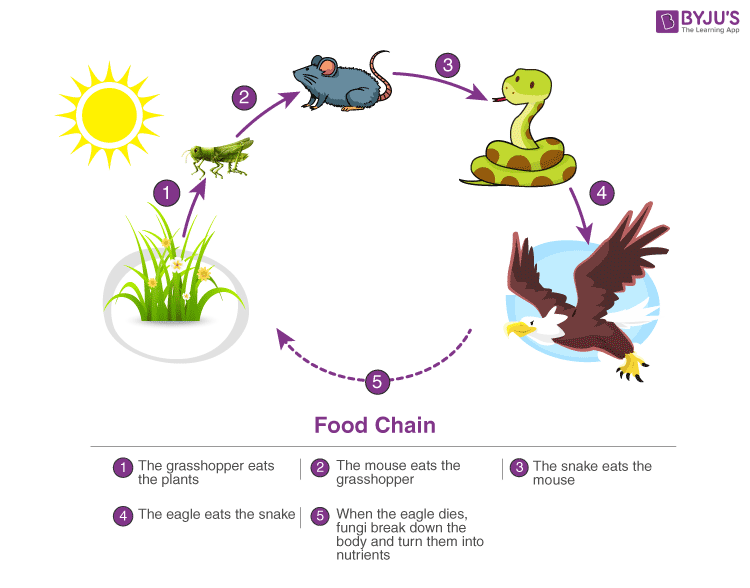
Human Impact on Ecosystems: Challenges and Conservation Efforts
Human activities have significantly impacted ecosystems worldwide, posing challenges to biodiversity and ecosystem services. However, concerted conservation efforts are being made to mitigate these impacts and preserve our natural heritage.
- Challenges: Pollution, habitat destruction, overexploitation of resources, and climate change are major threats to ecosystems. These challenges lead to loss of biodiversity, disruption of ecosystem services, and degradation of natural habitats.
- Conservation Efforts: To counteract these challenges, global and local conservation initiatives aim to protect vulnerable ecosystems and species. These efforts include establishing protected areas, restoring damaged ecosystems, sustainable management of natural resources, and promoting biodiversity-friendly practices.
- Community Involvement: Engaging local communities in conservation efforts is crucial. Community-based conservation recognizes the role of indigenous knowledge and practices in ecosystem management and aims to balance human needs with environmental sustainability.
- Policy and Legislation: Effective environmental policies and legislation are essential for regulating human activities that impact ecosystems. International agreements and national laws aim to reduce pollution, combat climate change, and protect endangered species and habitats.
Addressing human impacts on ecosystems requires a multi-faceted approach that combines scientific research, conservation action, policy development, and community engagement to ensure a sustainable future for our planet.
What Is an Ecosystem?
Explore the wonders of our planet\'s diverse and interconnected Ecosystem in this captivating video. Discover the intricate relationships between plants, animals, and their environment, and be inspired to protect and cherish the beauty of nature.
Ecosystem Definition and Example in Biology
Unravel the intriguing Definition of a concept that has eluded many. This enlightening video breaks down complex ideas into simple and relatable explanations, leaving you with a clear understanding and a newfound knowledge that will surely impress.
Ecosystem Dynamics: Succession, Resilience, and Stability
Ecosystems are dynamic entities, constantly undergoing changes through processes such as succession, while demonstrating resilience and stability. Understanding these concepts is key to grasping how ecosystems function and respond to disturbances.
- Succession: Succession is the process by which the structure of a biological community evolves over time. It can be primary, beginning in a lifeless area where soil has not yet formed, or secondary, occurring in areas where a community has been removed; it is gradually replaced by another set of species.
- Resilience: Resilience refers to the ability of an ecosystem to absorb disturbances and still retain its basic function and structure. It is a critical factor in the recovery of ecosystems from events like natural disasters or human-induced changes.
- Stability: Stability in an ecosystem implies the capacity to maintain its essential functions and processes in the face of external stress or disturbances. It is often related to biodiversity, with more diverse ecosystems tending to be more stable.
These dynamics play a crucial role in the maintenance and restoration of ecosystems, influencing conservation strategies and our understanding of ecological balance.

Case Studies: Examples of Ecosystem Management and Restoration
Throughout the world, various ecosystems have been successfully managed and restored through innovative and dedicated efforts. These case studies highlight the potential for positive change and the importance of ecological preservation.
- The Everglades Restoration: In the United States, the Comprehensive Everglades Restoration Plan (CERP) aims to restore natural water flow to this vast wetland. The project addresses water needs for both the ecosystem and human use, combating years of drainage and degradation.
- The Loess Plateau Rehabilitation: China"s Loess Plateau underwent one of the world"s largest and most successful land restoration projects. Through terracing, planting trees, and sustainable agricultural practices, the area has seen a dramatic increase in productivity and biodiversity.
- Reforestation of the Amazon Rainforest: Efforts to replant trees in the Amazon Rainforest aim to restore land stripped by deforestation. This not only helps to conserve biodiversity but also plays a crucial role in carbon sequestration, combating climate change.
- The Great Green Wall: An initiative to combat desertification in the Sahel region of Africa, the Great Green Wall aims to grow an 8,000km belt of trees across the continent. This ambitious project seeks to improve food security, resilience to climate change, and livelihoods of millions.
These examples demonstrate the impact of concerted ecosystem management and restoration efforts, offering hope and a roadmap for future projects worldwide.
READ MORE:
Emerging Research: Technological Advances in Ecosystem Science
Technological advancements are revolutionizing ecosystem science, offering new insights and tools for understanding, monitoring, and managing ecosystems more effectively. These emerging research areas highlight the fusion of technology and ecology.
- Remote Sensing and Satellite Imagery: These technologies provide comprehensive and real-time data on land cover changes, habitat fragmentation, and climate impacts on ecosystems globally, enabling more precise conservation strategies.
- Genetic Analysis: Advances in genetic analysis allow scientists to understand biodiversity at a molecular level, aiding in species identification, conservation genetics, and the study of evolutionary processes within ecosystems.
- Ecological Modeling and Big Data: The use of big data analytics and ecological models enables the prediction of ecosystem responses to various environmental changes, helping to inform policy and management decisions.
- Drone Technology: Drones offer a versatile and efficient method for ecological monitoring, habitat mapping, and assessing the health of ecosystems, providing data that were previously difficult or impossible to gather.
- Citizen Science Platforms: These platforms engage the public in data collection and monitoring, expanding the scope of ecological research and fostering a greater connection between communities and their local environments.
These technological advances are opening new frontiers in ecosystem science, enhancing our ability to preserve and restore the natural world.
Exploring the intricate world of ecosystems reveals the beauty of biodiversity and the vital roles these systems play in sustaining life on Earth, urging us to commit to their preservation for future generations.



